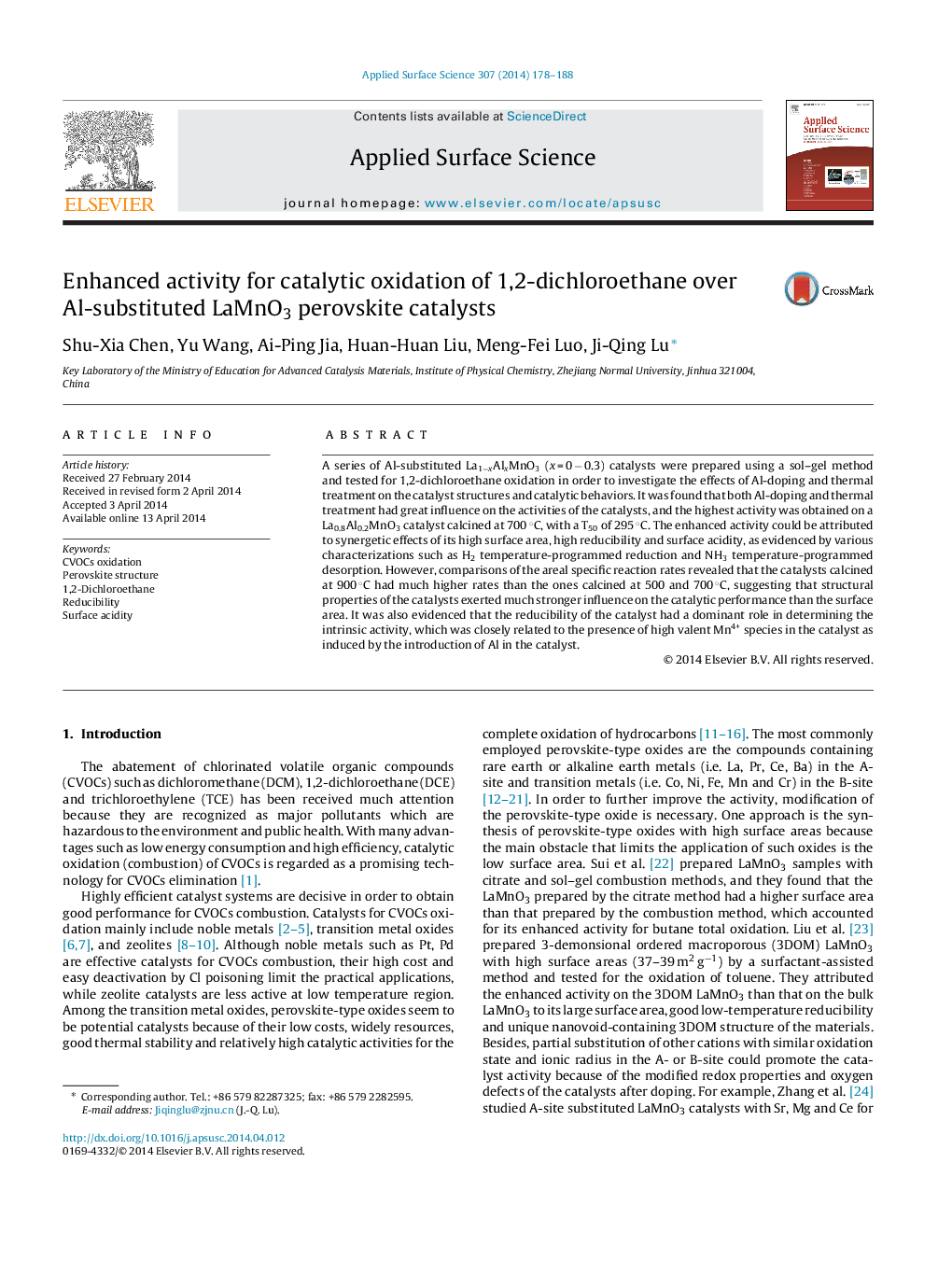| Article ID | Journal | Published Year | Pages | File Type |
|---|---|---|---|---|
| 5351338 | Applied Surface Science | 2014 | 11 Pages |
â¢Al substitution in LaMnO3 structure promoted redox property of the catalyst.â¢Al substitution in LaMnO3 structure enhanced surface acidity of the catalyst.â¢Activity was determined by synergy of reducibility and surface acidity of catalyst.â¢Intrinsic activity was related to the presence of high valent Mn4+ species.
A series of Al-substituted La1âxAlxMnO3 (x = 0 â 0.3) catalysts were prepared using a sol-gel method and tested for 1,2-dichloroethane oxidation in order to investigate the effects of Al-doping and thermal treatment on the catalyst structures and catalytic behaviors. It was found that both Al-doping and thermal treatment had great influence on the activities of the catalysts, and the highest activity was obtained on a La0.8Al0.2MnO3 catalyst calcined at 700 °C, with a T50 of 295 °C. The enhanced activity could be attributed to synergetic effects of its high surface area, high reducibility and surface acidity, as evidenced by various characterizations such as H2 temperature-programmed reduction and NH3 temperature-programmed desorption. However, comparisons of the areal specific reaction rates revealed that the catalysts calcined at 900 °C had much higher rates than the ones calcined at 500 and 700 °C, suggesting that structural properties of the catalysts exerted much stronger influence on the catalytic performance than the surface area. It was also evidenced that the reducibility of the catalyst had a dominant role in determining the intrinsic activity, which was closely related to the presence of high valent Mn4+ species in the catalyst as induced by the introduction of Al in the catalyst.
Graphical abstractDownload full-size image
